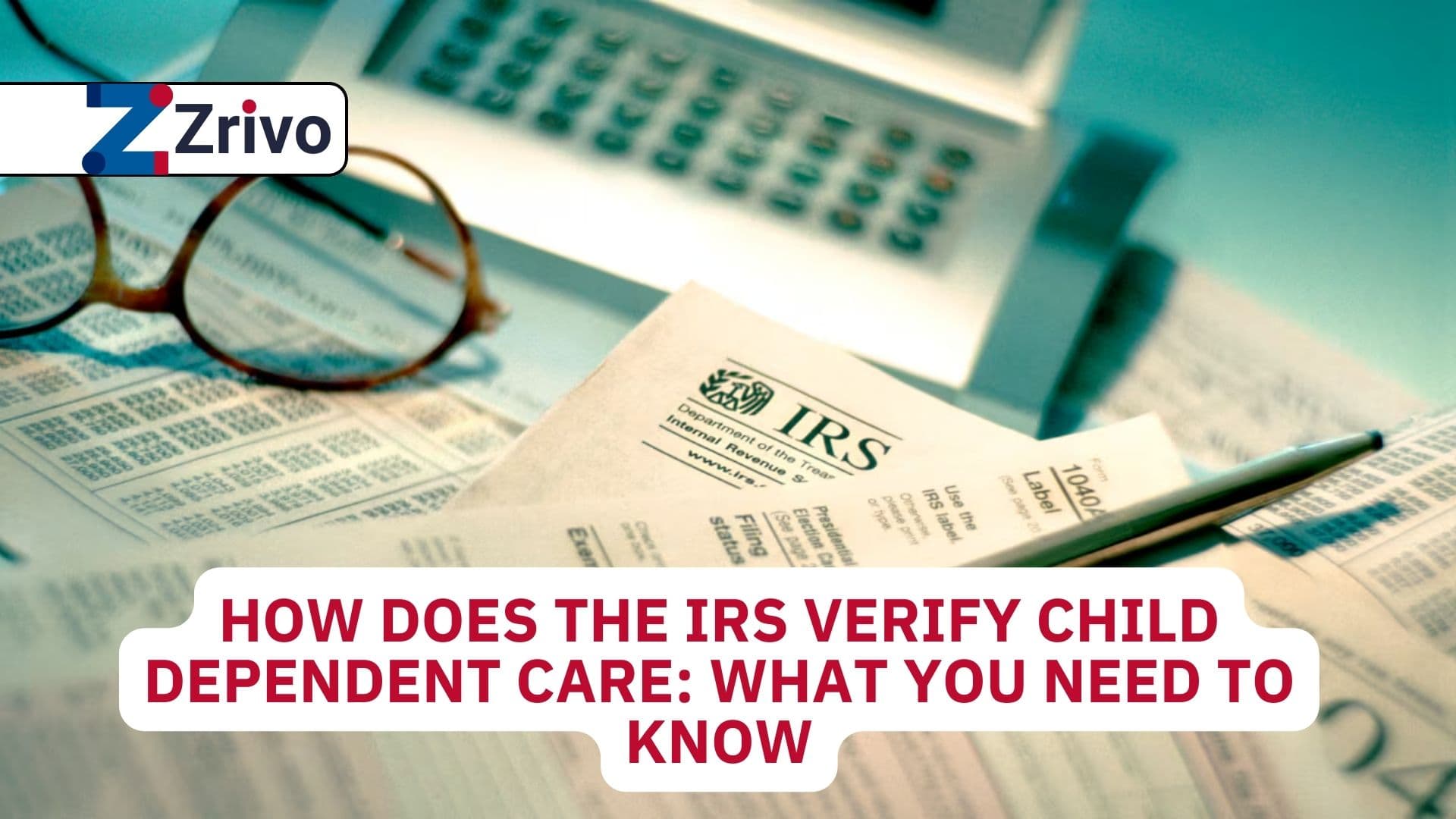
If you’re wondering how the IRS verifies child dependent care, you’re not alone! The IRS verification process for child dependent care is a key step to ensure that taxpayers are claiming the appropriate credits for eligible children and dependents. When you claim the Child and Dependent Care Credit on your tax return, the IRS requires specific documentation to confirm that the care was provided, the expenses are legitimate, and the care is indeed for a qualified child or dependent. This verification ensures that taxpayers are not taking advantage of tax benefits they’re not entitled to, maintaining fairness within the system. If you’re planning to claim the credit, it’s important to understand how the IRS verifies child dependent care to avoid any issues with your tax return. In this article, we’ll break down how the IRS verifies child dependent care, what documents you need to provide, and how to ensure you meet all requirements. So, let’s dive in and explore this process to make sure you’re ready for tax season!
The Child and Dependent Care Credit: What It Is and Who Is Eligible
Before we dive into the IRS verification process, it’s helpful to understand what the Child and Dependent Care Credit is and who qualifies. This credit helps working parents or caregivers offset the cost of care for children under 13 or for dependents who are physically or mentally incapable of caring for themselves. The credit can cover up to 35% of qualifying care expenses, depending on your income level. To qualify, the care must be provided by a licensed provider, and the care must allow you to work or look for work. The more you know about these requirements, the smoother the verification process will be.

What Does The IRS Require for Child Dependent Care Verification?
The IRS verification process for child dependent care involves a few key pieces of documentation. The most important piece is the Provider Identification Number (PIN) or the Employer Identification Number (EIN) of the care provider. This ensures that the care provider is legitimate and that payments made for child care are being documented correctly. Additionally, you’ll need to provide the name, address, and taxpayer identification number (TIN) of the care provider. These requirements help the IRS confirm that the expenses you’re claiming are for valid child or dependent care services.
Documentation for Child Dependent Care Verification
When filing for the Child and Dependent Care Credit, documentation is your best friend! The IRS requires detailed records of the care you provided or paid for, including:
- Receipts or statements showing the amount you paid for child care services
- Provider details, including their business name, address, and TIN
- Proof of the care being necessary for work, such as a letter from your employer if applicable, or evidence showing that the care was needed for you to work or look for work
Make sure these documents are organized and easily accessible. If the IRS requests documentation, having everything in order can prevent delays and potential disqualification from the credit.
Common Mistakes to Avoid When Claiming Child Dependent Care
There are a few common mistakes taxpayers make when claiming child dependent care, which could lead to delays or disqualification of your credit. One of the biggest errors is failing to include the provider’s TIN or EIN. This is essential for verification, and without it, the IRS may not approve your claim. Another mistake is claiming the credit for care that doesn’t qualify, such as care provided by a relative under the age of 19 or a spouse. Also, make sure the care expenses are properly documented; failing to do so could result in an audit or denial of the credit. Always double-check your forms to ensure everything is accurate and up-to-date.

How The IRS Reviews and Audits Child Dependent Care Claims
The IRS reviews child dependent care claims carefully to ensure compliance with the rules. If you’re selected for an audit or a random review, the IRS may request additional documentation to verify your eligibility for the credit. This could include asking for receipts, confirming the legitimacy of your care provider, or asking you to clarify any details about the care you provided. It’s important to respond quickly and thoroughly to any requests from the IRS to avoid delays or penalties. If your claim is legitimate and well-documented, the IRS should approve your credit without any issues.
Tips for Ensuring a Smooth IRS Verification Process
To ensure a smooth IRS verification process when claiming the Child and Dependent Care Credit, here are a few tips:
- Double-check provider information: Ensure that the care provider’s details, including their TIN, are correct on your tax form.
- Keep detailed records: Organize all receipts and proof of payments for child care services.
- Follow the rules: Make sure you meet all eligibility requirements for the credit, including working or looking for work while receiving care.
- Submit accurate forms: Fill out all forms accurately, particularly Form 2441, which is used to claim the credit.
By staying organized and prepared, you’ll ensure that the IRS verification process is quick and painless.

What Happens if the IRS Denies My Child Dependent Care Credit?
If the IRS denies your Child and Dependent Care Credit, you may receive a notice explaining the reason for the denial. This could be due to missing or incorrect documentation, failure to meet eligibility requirements, or errors on your tax return. If you disagree with the IRS’s decision, you have the right to appeal the denial. However, it’s best to resolve any issues as soon as possible by providing the necessary documentation or correcting any errors in your original submission.
Understanding how the IRS verifies child dependent care is key to successfully claiming the credit and avoiding delays or issues. By following the proper documentation requirements, avoiding common mistakes, and staying organized, you can ensure that your claim is processed smoothly. The Child and Dependent Care Credit is a valuable tax benefit for parents and caregivers, and with the right preparation, you can make the most of it while keeping your tax situation stress-free.
Frequently Asked Questions (FAQs)
Q: What documents are needed to claim the Child and Dependent Care Credit?
A: You’ll need to provide the care provider’s name, address, TIN, and details of the care expenses you paid, along with receipts or statements for verification.
Q: Can I claim the Child and Dependent Care Credit if I pay a relative for child care?
A: No, the care provider must not be a relative under the age of 19 or a spouse. It’s essential that the care is provided by a legitimate third-party provider.
Q: What happens if the IRS rejects my Child and Dependent Care Credit claim?
A: If your claim is rejected, the IRS will send you a notice explaining the reason. You can resolve the issue by submitting missing documentation or correcting any errors.